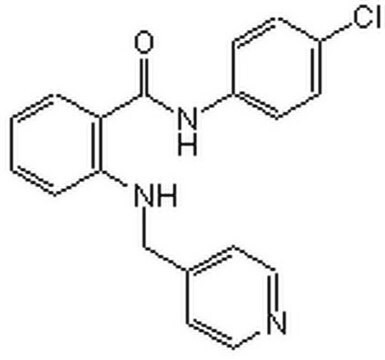685070
Poly[(9,9-dioctylfluorenyl-2,7-diyl)-co-bithiophene]
99.9%
Sinonimo/i:
F8T2, Poly(9,9-dioctylfluorene-alt-bithiophene), Poly[[2,2′-bithiophene]-5,5′-diyl(9,9-dioctyl-9H-fluorene-2,7-diyl)]
About This Item
Prodotti consigliati
Saggio
99.9%
Forma fisica
powder
PM
average Mn >20,000
Fluorescenza
λex 400 nm; λem 497 nm in chloroform (at Mn = 20,000)
Caratteristiche del semiconduttore
P-type (mobility=5×10−3 cm2/V·s)
Categorie correlate
Descrizione generale
Polymer is end-capped with 3,5-dimethylbenzene.
Applicazioni
Codice della classe di stoccaggio
11 - Combustible Solids
Classe di pericolosità dell'acqua (WGK)
WGK 3
Punto d’infiammabilità (°F)
Not applicable
Punto d’infiammabilità (°C)
Not applicable
Scegli una delle versioni più recenti:
Possiedi già questo prodotto?
I documenti relativi ai prodotti acquistati recentemente sono disponibili nell’Archivio dei documenti.
Articoli
The development of high-performance conjugated organic molecules and polymers has received widespread attention in industrial and academic research.
Organic photovoltaics (OPVs) represent a low-cost, lightweight, and scalable alternative to conventional solar cells. While significant progress has been made in the development of conventional bulk heterojunction cells, new approaches are required to achieve the performance and stability necessary to enable commercially successful OPVs.
There is widespread demand for thin, lightweight, and flexible electronic devices such as displays, sensors, actuators, and radio-frequency identification tags (RFIDs). Flexibility is necessary for scalability, portability, and mechanical robustness.
Il team dei nostri ricercatori vanta grande esperienza in tutte le aree della ricerca quali Life Science, scienza dei materiali, sintesi chimica, cromatografia, discipline analitiche, ecc..
Contatta l'Assistenza Tecnica.![Poly[(9,9-di-n-octylfluorenyl-2,7-diyl)-alt-(benzo[2,1,3]thiadiazol-4,8-diyl)] average Mn ≤25000](/deepweb/assets/sigmaaldrich/product/structures/428/661/1c4ebb98-9d51-48c0-96c7-e556ca425aa4/640/1c4ebb98-9d51-48c0-96c7-e556ca425aa4.png)







